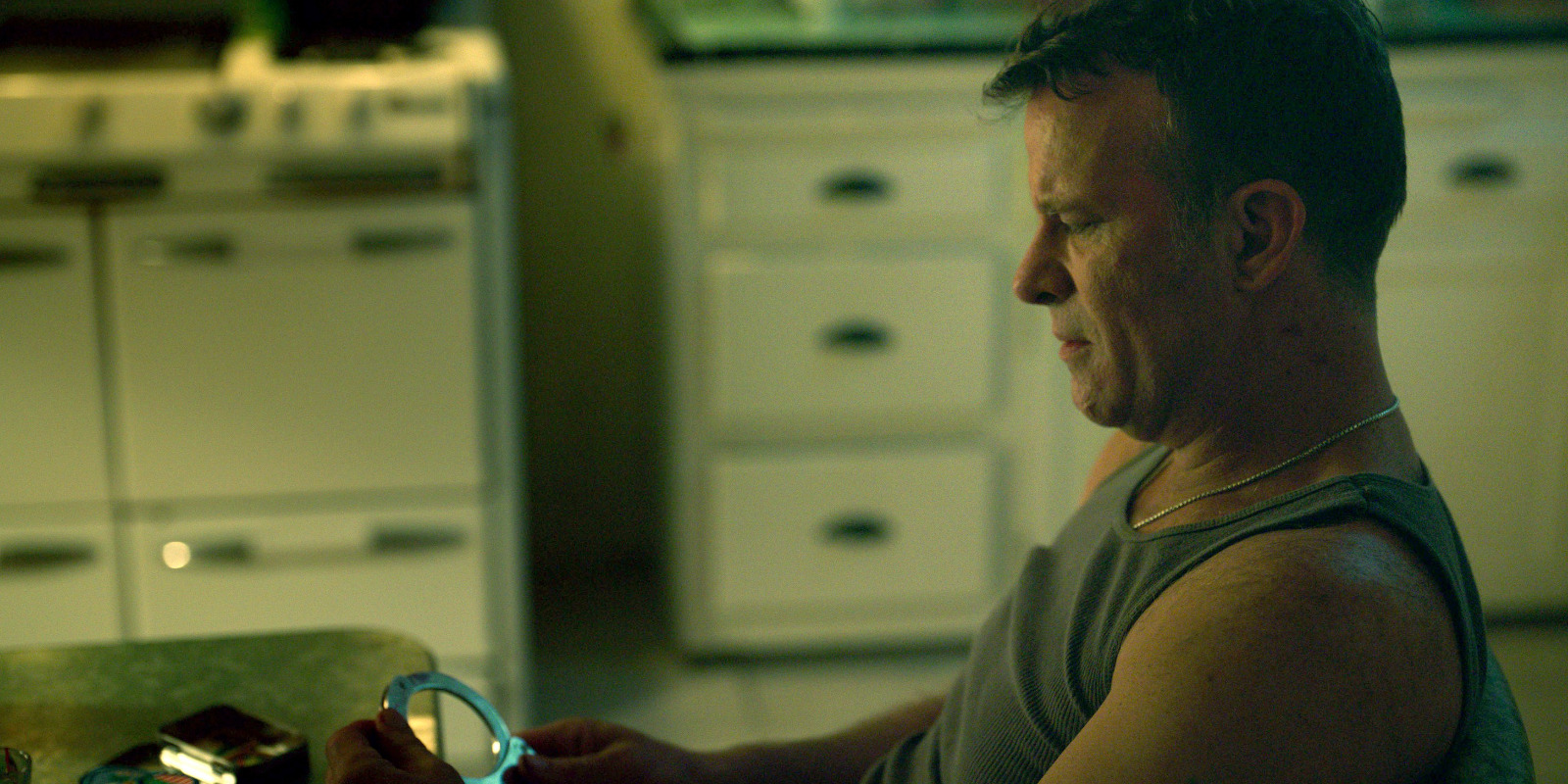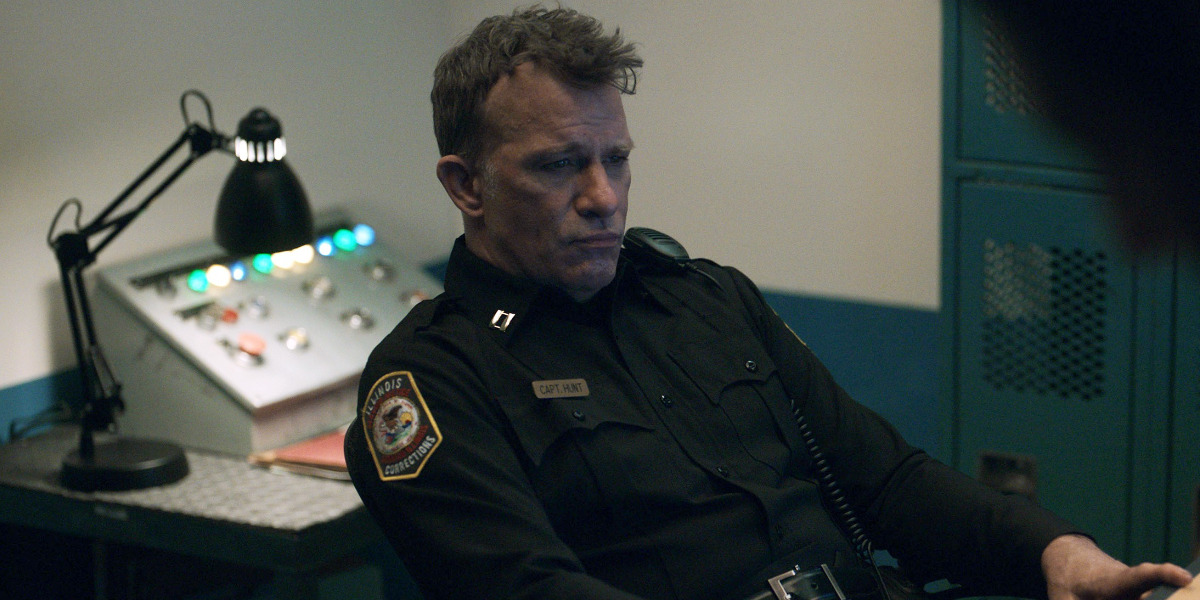Thomas Jane embodies the antagonistic Officer Hunt, head of the prison guards, in Nicholas Manuel Pino’s drama thriller film, ‘Bosco.’ The story revolves around Quawntay “Bosco” Adams, a young man on the heels of becoming a father who finds himself stuck in a thirty-five years-long prison sentence for a non-violent marijuana-related crime. As a result, the man remains steadfast and persistent in his efforts to break out of the maximum-security federal prison to ensure his daughter doesn’t grow up without a father. While Bosco manages to find an ally of sorts in Tammy, a southern woman outside the prison who contacts him on a phone line, the man also finds an enemy in the prison’s head Guard, Hunt.
As the film unfolds, Hunt and Bosco’s relationship adds a tense atmosphere to the narrative, showcasing the brutal reality of life in prison. Furthermore, through their dynamic, the story gets to explore the blatantly racist circumstances of most prisons. Therefore, given Hunt’s narrative significance in the film, viewers must be curious to know if his character has a basis in real life.
Captain Hunt Likely Harvests Inspiration From Reality
Captain Hunt from ‘Bosco’ is most likely based on a real-life prison officer. Manuel Pino’s film is an on-screen adaptation of a biographical book, ‘Chasin’ Freedum,’ written by the actual Quawntay Adams, often dubbed as the only man to break out of maximum-security jail. Since the film is based on Adams’ real-life experiences following his arrest in 2004 and prison break in 2006, the characters and storylines that build the film’s narrative remain rooted in reality.

For the same reason, it’s safe to assume Captain Hunt was either a real-life Officer of the Law in charge of the prison that Adams escaped from, Illinois’ Alton City Jail, or the former is based on a real-life counterpart sporting a different name. Still, despite Hunt’s probable real-life basis, little to nothing is known about the man. The film offers an authentic perspective into his character, employed to showcase the discrimination and violence that Adams had to undergo during his prison sentence, especially in the early days. However, outside of the same, the narrative doesn’t delve into other specifics about Hunt’s character.
The same ends up playing in the story’s favor, as it allows Hunt’s character to stand in for the injustice that resides within the prison community in terms of discrimination against social minority groups. In real life, conversations around prisoners’ rights notoriously note the racism that persists in prison guards or correctional officers. In fact, a 2016 review by The New York Times found racial disparities in New York prison experiences after a thorough examination of disciplinary cases against inmates in 2015.
Therefore, through Hunt’s character, the narrative is able to address the discrimination that Adams faced while serving his sentence in the 2000s and 2010s. For the same reason, since racial disparity remains an instrumental theme in the film, Hunt’s character, though unpleasant, ends up playing a vital role in maintaining a sense of realism throughout the story.
Even though no additional information is known about Hunt’s real-life counterpart, outside of what Adams has shared in his book and film, his character is most likely based on an officer that the author came across during the sixteen years he served in prison. Thus, ultimately, Hunt’s character inevitably has roots in reality.


